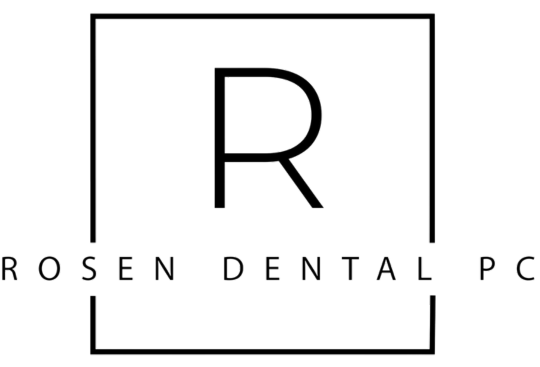Are you curious about the durable and discreet restorative options for your teeth known as inlays and onlays? Rosen Dental PC is here to demystify these custom-crafted solutions that seamlessly repair damage and decay, preserving your smile’s integrity and appearance.
Understanding Inlays vs. Onlays Differences
When it comes to restorative dentistry, inlays and onlays play a pivotal role in repairing teeth that have been damaged by decay or injury. Inlays are custom-made fillings, typically made from composite material, gold, or tooth-colored porcelain, that fit into the grooves of a tooth without extending over the cusps. They are an ideal alternative to traditional fillings, offering a more precise fit and enhanced aesthetic appeal. On the other hand, onlays, also known as partial crowns, cover one or more cusps and are used when the damage is more extensive. Onlays not only restore the shape of the tooth but also provide substantial reinforcement, making them a preferred choice for larger cavities.
Both inlays and onlays are fabricated in a dental lab and then bonded to the tooth during a second visit to the dentist. This two-step process ensures a high degree of accuracy and fit, preserving as much healthy tooth as possible while also restoring function and appearance. For those interested in the aesthetic and functional benefits of these restorative options, Discover the allure of porcelain inlays and onlays, which combines durability with a natural look, making them an excellent choice for patients seeking a seamless restoration.
Benefits of Choosing Inlays/Onlays
Inlays and onlays offer a multitude of benefits for those seeking to improve their dental health while maintaining a natural-looking smile. Unlike traditional fillings, inlays and onlays are custom-crafted from high-quality materials like porcelain or composite resin, which ensures a superior fit and a more durable solution to tooth decay or damage. They are less invasive than crowns because less of the natural tooth structure needs to be removed to accommodate them. This means that inlays and onlays can preserve more of your natural tooth, leading to a stronger overall structure. Additionally, they are specifically designed to match the color and contour of your existing teeth, providing a seamless and aesthetically pleasing restoration.
Another significant advantage is their longevity. With proper care, inlays and onlays can last much longer than conventional fillings, making them a cost-effective choice in the long run. They also provide better protection against bacteria and decay because they are bonded directly to the tooth, creating a tight seal. This bonding process also helps to strengthen the tooth, which can prevent future fractures or damage. For those looking to restore their smile with this advanced dental technique in the Somers area, consider visiting our dedicated page on porcelain inlays and onlays. Restore Your Smile in Somers with our expertly crafted dental solutions.
The Inlay/Onlay Procedure Explained
Understanding the inlay and onlay procedure is crucial for patients seeking durable solutions for tooth decay or damage. Initially, your dentist will remove any decay or old filling material, meticulously cleaning the affected area to prepare for the new restoration. Impressions of your tooth are then taken, which serve as a blueprint for crafting the custom inlay or onlay, typically made from porcelain, composite resin, or gold. While an inlay fits within the cusps of the tooth’s biting surface, an onlay covers one or more cusps or even the entire biting surface. The restoration is then precisely bonded to the tooth, polished, and adjusted to ensure a perfect fit and bite alignment. This process not only restores the structural integrity of your tooth but also blends seamlessly with your natural teeth, offering a functional and aesthetic solution that can last for many years with proper care.
Materials Used in Inlays/Onlays
When considering restorative dental treatments, the materials used in inlays and onlays play a pivotal role in the durability, aesthetics, and compatibility of the procedure. Traditionally, gold has been the material of choice for its longevity and strength, making it ideal for molars that endure significant chewing forces. However, porcelain and composite resin have gained popularity for their ability to mimic the natural tooth color, offering a more discreet solution. Porcelain is particularly favored for its resistance to staining and its capacity to bond securely with the tooth structure. Composite resin, while not as durable as porcelain or gold, provides a cost-effective and tooth-colored alternative that can be easily repaired if damaged. Some dentists also offer ceramic inlays/onlays, which combine strength with a natural appearance. The choice of material is typically influenced by the location of the tooth, the extent of decay or damage, patient preference, and budget considerations.
Caring for Your Dental Restorations
Maintaining the longevity and effectiveness of your dental inlays and onlays is crucial for oral health. To ensure these restorations serve you well, adopt a meticulous oral hygiene routine that includes twice-daily brushing with fluoride toothpaste and regular flossing to prevent plaque buildup around the restoration margins. Additionally, it’s important to visit your dentist for routine check-ups and cleanings, typically every six months, to monitor the condition of your inlays and onlays. Avoiding hard and sticky foods can also protect your restorations from damage. By taking these steps, you can help preserve the integrity of your dental work and maintain a healthy, beautiful smile.
Conclusion
For expert inlay preparation that ensures superior restoration, contact Rosen Dental PC at 914-277-8400, and read our reviews on Google Maps.

